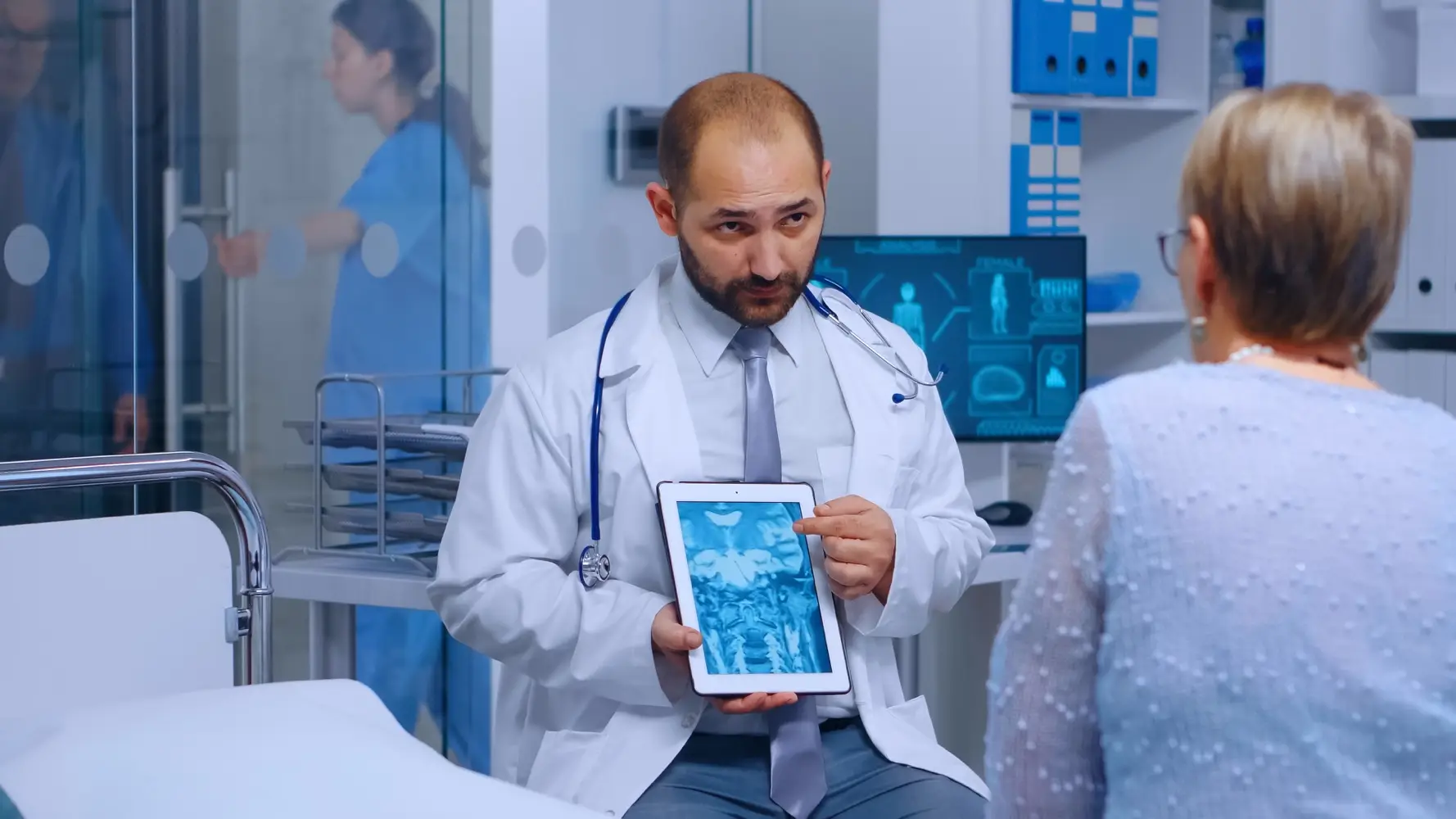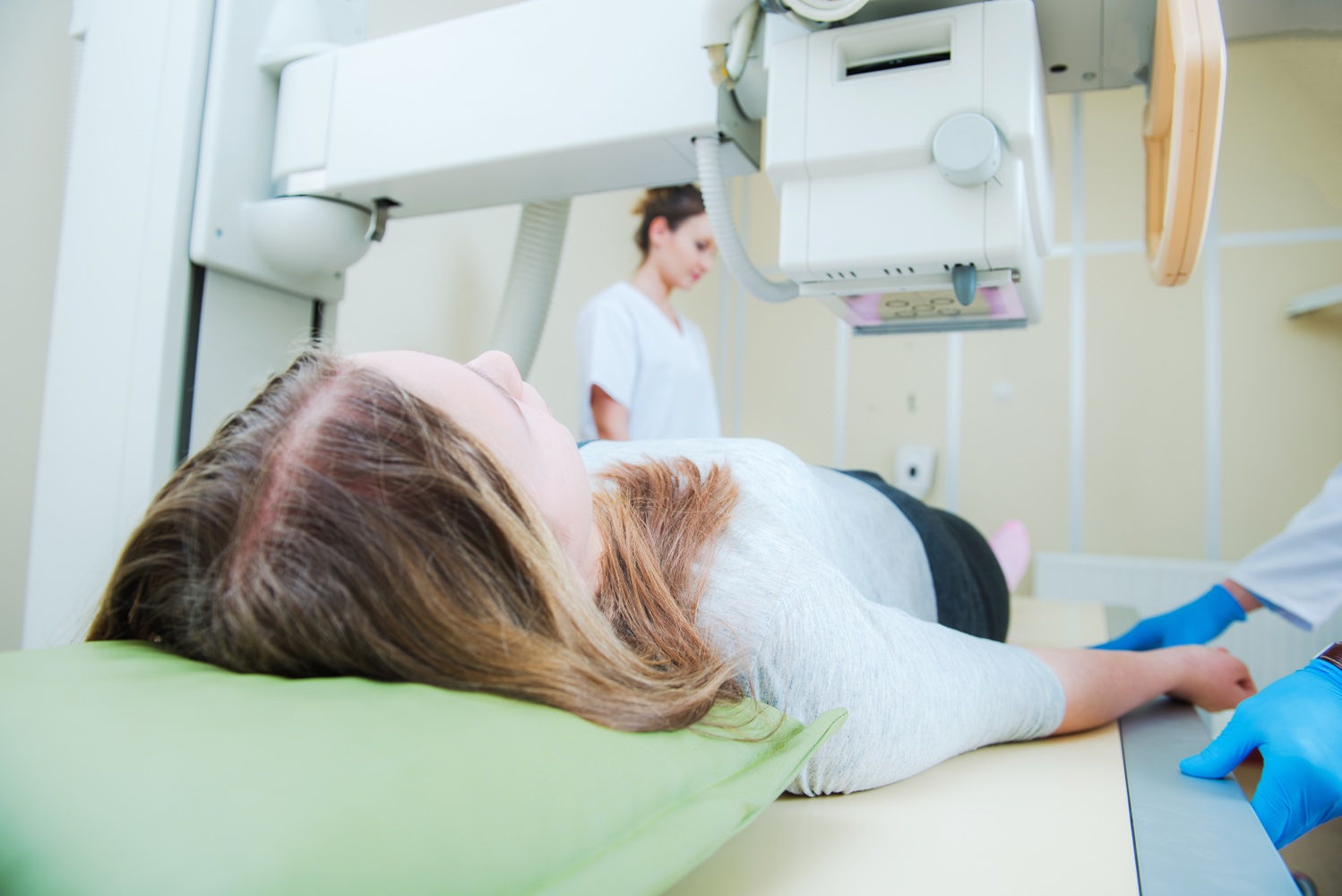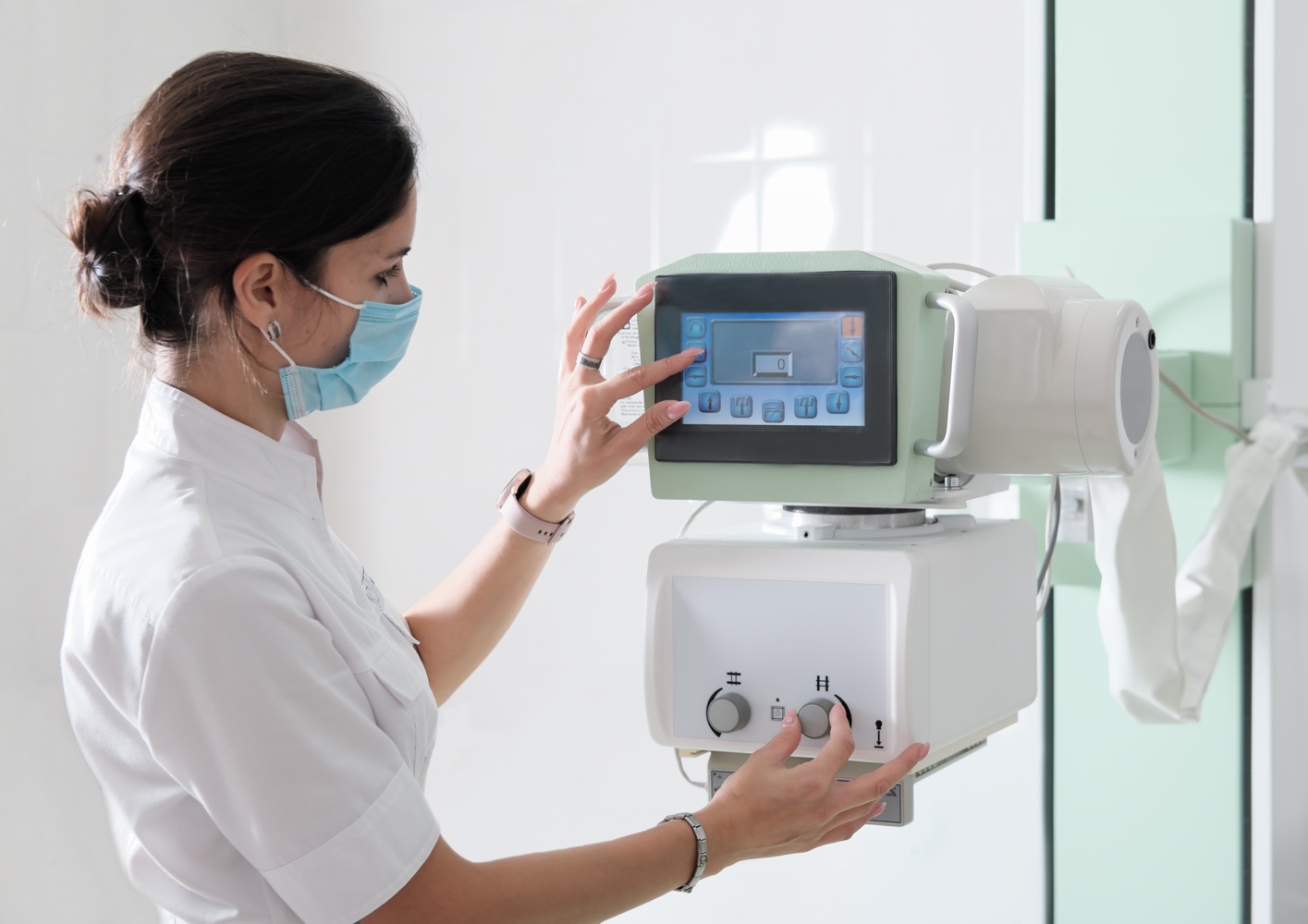Radiology is the field of medicine that uses X-rays, radio waves, and sound waves in the diagnosis and treatment of various diseases and performs invasive procedures together with imaging methods. Radiology consists of two fields, diagnostic radiology, and radiotherapy. Diagnostic radiology is the field of radiology that aims to evaluate the signs of diseases, determine the treatment method, and examine the effectiveness of the treatment applied. Radiotherapy is generally used to guide surgical operations. Angiography methods applied for vessels and needle biopsy methods taken from organs are examined under the heading of radiotherapy.
Angiography

Angiography is a diagnostic method performed to examine arteries, veins, and heart valves. To evaluate the function of the heart muscle, the occlusion of the coronary (supplying, belonging to the heart) arteries, and the vessels leading to the heart in patients with myocardial infarction (heart attack), heart valve disease, suspicious effort test results, severe chest pain or undergoing cardiac surgery. angiography method is applied.
The angiography procedure is usually performed by entering the artery called the arteria femoralis located in the right groin. Before starting the procedure, the inguinal region is locally anesthetized, and the procedure is painless. A thin catheter advanced from the femoral artery is passed through the external iliac artery, common iliac artery, and abdominal aorta, respectively, to reach the heart. Access to the left ventricle (ventricle) is provided to assess the pumping function of the heart. For vessels that are found to be occluded during the angiography procedure, the vessel is opened by using the stent insertion method. Another method used to open clogged vessels during angiography is balloon angioplasty. In the balloon angioplasty method, a balloon is inserted through the catheter into the vessel where the stenosis occurs. The balloon is inflated in this area and the plaque that is blocking the vessel is destroyed. After the procedure, compression and bandage are applied to the intervention site for a short time. The patient is allowed to rest for 4-6 hours after the procedure. Before planned angiography, blood analysis is performed, and platelet values and kidney functions are evaluated. In addition, it is ensured that the patient is in a fasting state for approximately 10 hours before the procedure.
In patients who will undergo angiography, when the femoral artery cannot be used due to occlusion of the femoral artery or any other problem, the brachial artery is used by entering from the arm or the radial artery is used by entering from the wrist.
Since angiography is an invasive method, it poses a risk of some complications. Coronary artery damage, hematoma, aneurysm, low heart rate, hypotension, rhythm disturbances, and stroke are among the complications of the angiography procedure. Angiography and angioplasty procedures are painless and performed under general anesthesia.
After the angiography procedure, patients are advised to drink plenty of water and avoid smoking and alcohol use. In addition, it is recommended that patients do not enter hot water, do not lift heavy weights, and do not strain to avoid bleeding in the incision area. After the angioplasty procedure, blood thinners are used to eliminate the risk of clot formation.
Computed Tomography

Computed tomography is an imaging method that allows the examination of different sections of the body through x-rays. While the computerized tomography is being taken, the patient lies on a bed in the device and the moving x-ray source rotates around the patient, allowing the body to be scanned from every angle. A three-dimensional image is obtained by combining images taken from different angles by the device. Some situations should be considered in individuals who will undergo computed tomography imaging method. Computed tomography examination may sometimes be contraindicated for patients with obesity, patients with pacemakers, or patients with a phobia of enclosed spaces.
Bone tissue, soft tissue, and vessels can be examined in computed tomography images. Diagnosis of bone and joint problems (fractures, bone tumors, dislocations, etc.), lung and liver disorders, damage to internal organs, kidney stones, intestinal diseases (ulcerative colitis, inflammatory bowel disease, etc.), and cancer by computerized tomography monitoring is performed.
Computed tomography is a painless method. During the procedure, the patient should not move and in some cases hold their breath. During computed tomography, patients are exposed to some radiation. However, the amount of radiation exposure is not in doses that will harm the health of the patient. Since it is an imaging method that can be performed in a short time, the amount of radiation exposure is minimal. In the imaging of some body parts, medicated computed tomography method should be used. In the medicated computed tomography method, the patient is usually injected with a barium contrast agent. After the procedure, the patient is recommended to consume plenty of fluids to flush out the drug through urine. In addition, since the injected contrast material may cause allergic reactions in some patients, patients are followed for a while after the procedure. Patients may experience side effects such as redness, itching, and nausea due to contrast material allergy.
Radiation exposed during computed tomography may pose a risk to pregnant women. If the imaging process involves the abdomen and pelvis, an imaging method such as magnetic resonance or ultrasound, which does not emit radiation other than computed tomography, is preferred.
The images obtained after the computed tomography process are transferred to the computer environment. Radiologists can examine images in three dimensions or individual sections. When there are suspicious findings (tumor, fracture, etc.) on the images, further examinations and analyzes may be requested.
Mammography

Mammography is a radiological imaging method used to examine breast tissue in women. In the mammography procedure, the breast tissue is compressed between two layers, and an X-ray film is taken by giving an X-ray. The mammography method is considered the gold standard in the diagnosis of breast cancer. Lesions that are too small to be missed in the clinical examination can be visualized by mammography.
Today, mammography is performed for two different purposes; diagnostic or screening. Diagnostic mammography is performed to examine the breast tissue with suspicious findings (hardness felt in the breast tissue, changes in the nipple, redness, orange peel appearance, etc.) in the clinical examination. Mammography should be applied to all women who feel an immobile and painless mass in the breast tissue, have discharge from the nipple, have complaints such as tenderness, crusting, and dryness of the breast skin, and have noticeable swelling in the armpit. Screening mammography, on the other hand, should be performed every year for control and early diagnosis in all women over the age of 40 without any findings or suspicion. Breast cancer can be diagnosed through mammography. Screening mammograms are very important in the early diagnosis of breast cancer. However, it is not possible to catch all breast cancer cases with mammography. Depending on the type of breast cancer, the diagnostic tool varies. In cases that cannot be diagnosed by mammography, diagnosis can be made using tomosynthesis mammography and sonography methods.
During the mammography procedure, the patient stands and holds his breath for a while. Both breasts are processed in turn. Patients may feel discomfort as the breast tissue is compressed between the two layers during the extraction. To reduce the feeling of discomfort, it is recommended to take a shot in the first days after the menstrual period when the breast is less sensitive. In addition, the patient should not apply a substance such as deodorant or lotion to the armpit so that the image quality is not affected.
Contrast-enhanced mammography (spectral mammography) is a radiological method that allows visualization of increased vascularity in breast cancers. Before the imaging is performed, the patient is given an intravenous contrast agent with iodine.
During the mammography procedure, women are exposed to some radiation. However, since it is a short-term (approximately 15 minutes) procedure, the radiation exposure is seen as insignificant compared to the benefits of the examination. Annual mammograms are recommended for all women over the age of 40.